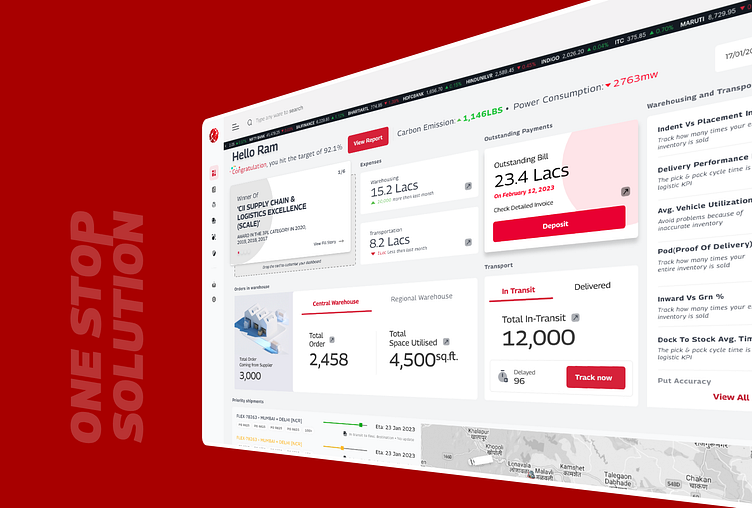Business Portal UI - Tracking And Tracing
Here is a case study for a design thinking approach to a portal for business users to track their records:
Context:
A business owner, Ram, runs a small accounting firm and is looking to track his business records through a portal. He is currently using an old system that is not user-friendly, and he finds it difficult to access the data he needs to make important business decisions.
Design thinking process:
Empathize: The design team starts by conducting interviews with Ram to understand his pain points and needs. They also observe him using the current system to identify pain points and areas for improvement.
Insights:
Ram is frustrated with the time it takes to navigate through the system to find the information he needs.
He often forgets where certain data is stored and has to spend time searching for it.
Ram frequently has to cross-reference multiple sources of information to get a complete picture of his business, which can be time-consuming and confusing.
Define: Based on the insights gathered during the empathy stage, the design team defines the problem they need to solve: how to make it easier for "Ram's" to track his business records through a user-friendly portal.
Ideate: The team generates a range of possible solutions, using techniques such as brainstorming and mind mapping. They consider ideas such as:
Creating a dashboard that shows all of "Ram's" important data in one place.
Developing a system that uses AI to predict trends and identify potential issues.
Making the system mobile-friendly, so "Ram" can access his data on the go.
Prototype: The team creates a prototype of the most promising solution, which includes a dashboard that shows all of "Ram's" important data in one place. They also include a search function that makes it easy to find specific data and a feature that allows Ram to customize the data he sees on his dashboard.
Test: The team tests the prototype with "Ram", and uses his feedback to refine the solution. They make adjustments based on his feedback, such as adding more customization options to the dashboard.
Outcome:
The final solution is a user-friendly portal that allows "Ram" to easily track his business records. The dashboard provides a complete view of his business, and the search function makes it easy to find specific data. The system is also mobile-friendly, which allows "Ram" to access his data on the go. As a result, Ram is able to make more informed decisions about his business, and he spends less time searching for the data he needs.
I hope this case study helps illustrate how design thinking can be applied to the development of a portal for business users to track their records. Let me know if you have any feedback!


